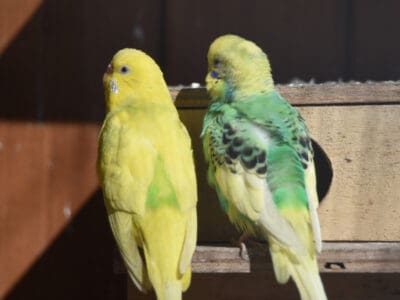Keel-Billed Toucan
.jumbotron {
background-image: url(“https://a-z-animals.com/media/Keel-billed-Toucan-on-branch-400×300.jpg”);
}
}
@media only screen and (min-width: 641px) and (max-width: 920px) {
.jumbotron {
background-image: url(“https://a-z-animals.com/media/Keel-billed-Toucan-on-branch-470×370.jpg”);
}
}
@media only screen and (min-width: 921px) {
.jumbotron {
background-image: url(“https://a-z-animals.com/media/Keel-billed-Toucan-on-branch.jpg”);
}
}
Keel-Billed Toucan
Ramphastos sulfuratus
Its bill is one-third of its length!
Keel-Billed Toucan Scientific Classification
- Kingdom
- Animalia
- Phylum
- Chordata
- Class
- Aves
- Order
- Piciformes
- Family
- Ramphastidae
- Genus
- Ramphastos
- Scientific Name
- Ramphastos sulfuratus
Read our Complete Guide to Classification of Animals.
Keel-Billed Toucan Conservation Status
Keel-Billed Toucan Facts
- Main Prey
- Fruit, Eggs, Insects
- Fun Fact
- Its bill is one-third of its length!
- Distinctive Feature
- Small body and enormous colourful beak
- Wingspan
- 109cm – 152cm (43in – 60in)
- Incubation Period
- 16-20 days
- Habitat
- Lowland rainforest and tropical forest borders
- Predators
- Human, Weasels, Large Birds
- Diet
- Omnivore
- Lifestyle
-
- Sociable
- Favorite Food
- Fruit
- Type
- Bird
- Average Clutch Size
- 3
- Slogan
- It’s beak can reach nearly 20 cm long!
- Nesting Location
- Tree cavities
- Age of Molting
- 8-9 weeks
This post may contain affiliate links to our partners like Chewy, Amazon, and others. Purchasing through these helps us further the A-Z Animals mission to educate about the world’s species..

Spiders that fly! Fish that walk! And 1000+ more incredible animals. Discover them all for FREE
.photo-gallery {
–margin: 0px auto 0px;
–padding: 0px 0px 0px 0px;
}
.gallery-link {
background-image: url(“https://a-z-animals.com/media/Keel-billed-Toucan-on-branch-1024×535.jpg”);
background-repeat: no-repeat;
background-size: cover;
background-position: center;
height: 500px;
justify-content: center;
text-align: center;
align-items: center;
display: flex;
border: 2px solid #000;
}
.gallery-link img {
height: 50%;
}
@media only screen and (max-width: 768px) {
.gallery-link {
height: 300px !important;
}
}
View all of the Keel-Billed Toucan images!
“Keel-billed Toucan’s bills are the colors of the rainbow!”
Keel-billed toucans are also known as “rainbow” toucans due to their large, colorful bills. They are also called “sulfur-breasted toucans” because they have a bright yellow patch on their breasts. These tropical birds thrive in the humid climates of Central and South America. They are not very good fliers and prefer to hop amongst the dense leaves of the canopy. Because they live very high up and do not fly often, they can be hard to spot despite their rainbow bills.
See all of our expert product reviews.
Keel-Billed Toucan Amazing Facts!
- The sound that these birds make has been likened to that of a frog. The sound can be heard from very far away, as it is quite loud.
- Because their bills are so large and curved, they are known as “the flying banana.”
- Their two nicknames are “rainbow-billed toucan” and “sulfur-breasted toucan.”
- Both parents help raise the eggs and young toucans.
Where To Find Keel-Billed Toucan
These colorful birds live in Central and South America. They range from Southern Mexico to Colombia and Venezuela. They prefer tropical dry and moist forests, as well as mangrove forests.
button.pulse {
transform: scale(1); animation: pulse 2s infinite;
box-shadow: 0 0 0 0 rgba(11, 247, 25, 1);
}
@keyframes pulse {
0% { transform: scale(0.90); box-shadow: 0 0 0 0 rgba(11, 247, 25, 0.5); }
60% { transform: scale(1); box-shadow: 0 0 0 15px rgba(11, 247, 25, 0); }
100% { transform: scale(0.90); box-shadow: 0 0 0 0 rgba(11, 247, 25, 0); }
}
They dwell in the high canopies of rainforests, where they can easily hop from branch to branch. The dense leaves also provide shelter and protection.
At night, these birds can be found roosting in the holes of trees. Several toucans nest together in the small space, up to 5 or 6 individuals per nest.
Keel-Billed Toucan Scientific Name
The keel-billed toucan’s scientific name is Ramphastos sulfuratus. This name means “large yellow beak,” with sulfuratus specifically referencing it’s sulfur-breasted appearance. There is currently one subspecies, whose scientific name is R. s. brevicarinatus This subspecies is found in Guatemala, Colombia, and Venezuela. Its name means “short keel,” referring to its shorter beak.
Keel-Billed Toucan Size, Appearance & Behavior
The bill of the keel-billed toucan is over 1/3 of its entire length, which is anywhere from 42-55cm long. They weigh between 4 and 8 pounds or 2.1 to 4 kilograms. Their wingspan is 109cm – 152cm in length.
Health and Entertainment for your Keel-Billed Toucan
See all of our expert product reviews.
These birds have small, dark bodies with a bright patch of yellow on their breasts. They have blue feet and greenish skin around their eyes. Their feet have two toes on the front and two on the back, making it easy for them to grip the branches in the canopy of the rainforest. Their tails are tipped with red feathers.
These birds are known for their loud calls. These sound like frog calls and can be heard up to half a mile away.
Though their beak looks like it might be cumbersome, it is hollow and light. The toucan’s large beak may be one of the adaptations that aid them in defense, as they can swing and peck with it. Another one of the positive adaptations of the toucan’s beak is that it allows them to reach for and pluck berries quite dexterously.
The keel-billed toucan is diurnal, which means it is awake during the day and sleeps at night. These birds are social animals that nest and flock together in familial groups. They like to playfully sword-fight and fence with their beaks, as well as toss fruit to one another.

Milan Zygmunt/Shutterstock.com
Keel-Billed Toucan Diet
These birds primarily eat fruit and berries. However, they are technically omnivores. Keel-billed toucans fill out their berry diet by occasionally eating insects, lizards, and snakes.
One of the adaptations of many rainforest trees is that their seeds survive the digestive process in various bird species. In this way, toucans and other rainforest fliers help distribute new seedlings so the trees can sprout and grow.
Keel-Billed Toucan Predators and Threats
Grown keel-billed toucans are preyed upon by large carnivorous birds such as hawks. Young toucans and eggs are threatened by weasels, snakes, and monkeys.
According to the IUCN’s Red List, keel-billed toucans are of least concern when it comes to conservation efforts. Even so, they have still experienced a decline in population over recent years. Most of this can be attributed to habitat loss, making humans a threat to the keel-billed toucan.
Keel-Billed Toucan Reproduction, Babies, and Lifespan
These social birds are monogamous for at least the year they decide to mate, if not subsequent years. In a tree cavity, a female keel-billed toucan will lay anywhere from 2 to 4 eggs. These eggs hatch into chicks after 15-20 days of incubation.
When keel-billed toucan chicks first hatch, their beaks are not fully developed. Like most birds, they hatch with their eyes closed and with no feathers on their body. After 8-9 weeks, the young have strong and developed bills and are ready to leave the nest.
Keel-billed toucans have a lifespan of about 15-20 years.
Keel-Billed Toucan Population
Though not yet considered endangered, these toucans are threatened by habitat loss. They are also hunted for their meat and beaks. Finally, toucans make for popular illegal exotic pets. These factors mean that their population is steadily decreasing, though they remain widespread throughout their habitat.
Most recent population estimates place these birds between 50,000 and 500,000 individuals.
View all 45 animals that start with K
Keel-Billed Toucan FAQs (Frequently Asked Questions)
Are Keel Billed Toucans herbivores, carnivores, or omnivores?
Keel Billed Toucans are Omnivores, meaning they eat both plants and other animals.
What Kingdom do Keel Billed Toucans belong to?
Keel Billed Toucans belong to the Kingdom Animalia.
What phylum do Keel Billed Toucans belong to?
Keel Billed Toucans belong to the phylum Chordata.
What class do Keel Billed Toucans belong to?
Keel Billed Toucans belong to the class Aves.
What eats a keel-billed toucan?
Large birds of prey found in the Central American rainforests are the keel-billed toucan’s primary threat. Their eggs, as well as their young, are targeted by weasels, monkeys, and snakes.
How many keel-billed toucans are left in the world?
It is estimated that the toucan’s population size ranges from 50,000 to 500,000 individuals.
What classification is a keel-billed toucan?
Keel-billed toucans are in the class Aves, which are descendants of one ancient bird ancestor. Every animal in this class shares characteristics like feathers, lightweight bones, and a hard beak.
Is the keel-billed toucan endangered?
No. Keel-billed toucans are not considered endangered according to the INCU Red List. However, they are still experiencing population decline due to hunting, habitat loss, and being captured for the exotic pet industry.
How big is the keel-billed toucan?
Keel-billed toucans are between 42-55cm long and weigh between 2.1 and 4 kilograms (4-8lbs).
Does keel-billed toucan migrate?
No. Like most species of toucan, the keel-billed toucan does not migrate.
How many eggs does keel-billed toucan lay?
Keel-billed toucans lay between 2 and 4 eggs per clutch. Both parents help raise the young.
How fast does keel-billed toucan fly?
Keel-billed toucans can reach a top speed of 39mph.
What is keel-billed toucan’s wingspan?
Its wingspan is between 109cm – 152cm (or 43in – 60in). When flying, it is known to birders as “the flying banana.”
When do keel-billed toucans leave the nest?
Young toucans leave the nest after 8 to 9 weeks. They fly away once their bills develop fully, and they can fend for themselves. The lifespan of this species is about 15-20 years once they are fully grown.
What family do Keel Billed Toucans belong to?
Keel Billed Toucans belong to the family Ramphastidae.
What order do Keel Billed Toucans belong to?
Keel Billed Toucans belong to the order Piciformes.
What genus do Keel-Billed Toucans belong to?
Keel-Billed Toucans belong to the genus Ramphastos.
What type of covering do Keel-Billed Toucans have?
Keel-Billed Toucans are covered in Feathers.
In what type of habitat do Keel-Billed Toucans live?
Keel-Billed Toucans live in lowland rainforest and tropical forest borders.
What is the main prey for Keel-Billed Toucans?
Keel-Billed Toucans eat fruit, eggs, and insects.
What are some distinguishing features of Keel-Billed Toucans?
Keel-Billed Toucans have small bodies and enormous, colorful beaks.
What is an interesting fact about Keel-Billed Toucans?
The Keel-Billed Toucan beak can reach nearly 20 cm long!
What is the scientific name for the Keel-Billed Toucan?
The scientific name for the Keel-Billed Toucan is Ramphastos sulfuratus.
What is the lifespan of a Keel-Billed Toucan?
Keel-Billed Toucans can live for 15 to 20 years.
How do Keel-Billed Toucans have babies?
Keel-Billed Toucans lay eggs.
Sources
- Seaworld Parks & Entertainment, Available here: https://seaworld.org/animals/facts/birds/keel-billed-toucan/
- Animalia, Available here: http://animalia.bio/keel-billed-toucan
- American Bird Conservancy, Available here: https://abcbirds.org/bird/keel-billed-toucan/
- Word Sense, Available here: https://www.wordsense.eu/carinatus/

















